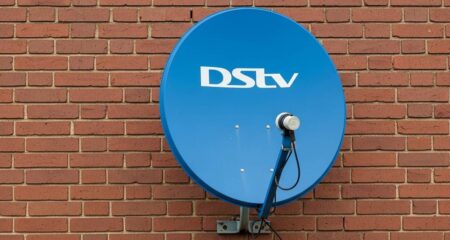
[By Duncan McLeod]
Televisions have been getting bigger, thinner, lighter and cheaper, offering consumers a high-definition and increasingly cinematic experience at home. But they have remained largely passive devices for consuming content. That may be about to change.
While we were watching the rugby at a friend’s house at the weekend on his new, 55-inch, wall-mounted monster of a TV, he started fiddling around with the remote control. Within a moment he’d brought up Twitter on the screen and was looking for comments on the game.
This prompted someone to ask if it was possible to watch the game while displaying tweets related to the rugby using a Twitter-specific “hash tag”. We didn’t get that far, but it was an intriguing idea. Sport is a social experience. What better way to make it more social than by using social networks like Twitter to see what other people are saying about a game and interact with them?
And that got me thinking: while smartphones, computers and tablets have changed the way we share information and experiences, television has remained largely a one-way communication mechanism. TVs themselves have changed dramatically in recent years, but, apart from online video games, we still use them largely to consume a one-way flow of content. I think a transformation is about to take place.
Deon Liebenberg, who used to head the local office of BlackBerry-maker Research In Motion and is now MD of Samsung Electronics in SA, described to me this week how he thinks convergence between consumer technologies is changing the way people behave. He described a future in which someone may be lying on his couch, tablet computer or smartphone in hand, and how he might swipe a video or a set of pictures from one of these devices wirelessly onto his large-screen TV. He says consumers want one ecosystem in their homes where devices interact seamlessly with each other, delivering an interactive and connected experience.
That got me thinking even further. With Apple and Google both driving online ecosystems through their application stores, why not extend this functionality to the TV set? Why hasn’t Apple built its own, Internet-connected TV with integrated computer running the same iOS operating system that powers the iPhone and the iPad, allowing consumers to buy applications and games in its vast online store? In many ways, it seems like the last piece of the puzzle for Apple.
Sure, the company has the Apple TV — the set-top box Steve Jobs has described as a “pet project” — but why not a full-blown hi-def TV? It seems only a matter of time before its rivals, such as Samsung, start building Google Android-powered TVs that offer similar functionality. My bet is we’ll see an iTV or iTelevision, or whatever Apple decides to call it, within a year. It’s the next logical step.
At the same time, the days of traditional linear broadcasts may be numbered. In a few years we may look back at the quaint era when we watched whatever broadcasters happened to be showing at a given time.
Last week, MultiChoice launched BoxOffice on its DStv platform. Selected movies are pushed to the hard drives of subscribers’ personal video recorders by means of satellite, allowing them to unlock the content on a rental basis. Much more exciting than this, though, is the news that MultiChoice is building an online video-on-demand solution, similar to Netflix in the US, which it should launch before the end of the year.
Multinational giants such as Apple, Microsoft and Google already offer similar services in some markets and will become direct competitors to broadcasters over time.
The battle over the screen in your lounge — and over what you do with it — is just getting started.
- Duncan McLeod is editor of TechCentral; this column is also published in Financial Mail
- Subscribe to our free daily newsletter
- Follow us on Twitter or on Facebook




